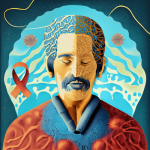This enlightening blog post explores the dynamic and evolving landscape of cancer treatments, showcasing the significant progress made in combating this formidable disease. From traditional methods like surgery and chemotherapy to cutting-edge innovations like immunotherapy and precision medicine, it highlights how treatments are increasingly tailored to the unique characteristics of each patient’s cancer. Techniques such as CAR-T therapy and radiopharmaceuticals illustrate the precision and sophistication of modern treatments, aiming not only to extend life but also to improve its quality. The post emphasizes the importance of a personalized approach, where decisions are made in collaboration with healthcare teams, ensuring that each patient receives the most effective treatment with the least side effects. This comprehensive overview not only educates on the current state of cancer care but also offers hope and inspiration by pointing towards a future where cancer can be managed more effectively or even cured.
Cancer, a word that once carried a near-certain grim prognosis, has seen remarkable strides in treatment options over the past few decades. Today, thanks to advances in medical science, there are multiple treatment pathways available, each tailored to the unique nature of the cancer and the individual patient. This blog post delves into the various types of cancer treatments currently available, shedding light on how they work and whom they’re best suited for.
1. Surgery: Surgery is one of the oldest forms of cancer treatment and remains the cornerstone of cancer care for many types. The primary goal is to remove the cancerous tumor and some of the surrounding healthy tissue to ensure no cancer cells remain. Surgery varies from minimally invasive procedures, such as laparoscopy, to more extensive operations, depending on the cancer’s location and stage.
2. Chemotherapy: Chemotherapy involves the use of drugs to kill cancer cells or stop them from growing and dividing. It can be administered orally, intravenously, or through other routes, depending on the specific cancer type and drug used. Chemotherapy is often used in conjunction with other treatments, such as surgery or radiation therapy, to maximize effectiveness.
3. Radiation Therapy: This treatment uses high-energy particles or waves, such as X-rays, gamma rays, electron beams, or protons, to destroy or damage cancer cells. Radiation therapy can be external (delivered from a machine outside the body) or internal (brachytherapy, where sources of radiation are placed inside the body). It’s a localized treatment, meaning it targets a specific part of the body.
4. Immunotherapy: Immunotherapy represents a breakthrough in cancer treatment, harnessing the power of the body’s immune system to fight cancer. This approach includes treatments that stimulate the immune system to work harder or smarter to attack cancer cells, as well as therapies that give the immune system components, such as man-made immune system proteins. CAR-T cell therapy, checkpoint inhibitors, and cancer vaccines are examples of immunotherapy.
5. Targeted Therapy: Targeted therapy focuses on specific molecules and signaling pathways that are crucial for cancer cell growth and survival. This type of treatment blocks the growth and spread of cancer by interfering with specific molecules (“molecular targets”) involved in the growth, progression, and spread of cancer. Targeted therapies are often used in combination with chemotherapy and other treatments.
6. Hormone Therapy: Hormone therapy is used to treat cancers that are hormone-sensitive and rely on hormones to grow, such as breast and prostate cancers. This treatment works by either stopping the body from producing specific hormones or by blocking the hormones’ effects on cancer cells. It’s often used alongside other cancer treatments.
7. Stem Cell (Bone Marrow) Transplant: This treatment helps replenish stem cells when the bone marrow has been destroyed by disease, chemotherapy, or radiation. Patients receive high doses of chemotherapy or radiation therapy to treat the disease and make room for new stem cells to grow. Then, healthy stem cells are transplanted into the patient’s body, where they can generate new, healthy blood cells.
8. Precision Medicine (Genomic Testing): Precision medicine tailors treatment to the individual characteristics of each patient’s cancer, based on genetic understanding of their disease. This approach allows doctors to select treatments that are most likely to help patients based on a genetic understanding of their disease, potentially with fewer side effects.
9. CAR-T Therapy: Chimeric Antigen Receptor T-cell therapy is a type of immunotherapy that uses specially altered T cells – a part of the immune system – to fight cancer. In this treatment, T cells are taken from a patient’s blood and modified in a laboratory to produce special structures called chimeric antigen receptors(CARs) on their surface. These CARs are designed to recognize and attach to specific proteins (antigens) on the surface of cancer cells. Once the modified T cells are infused back into the patient, they multiply and go on to recognize, attack, and destroy cancer cells.
10. Radiopharmaceuticals (Radionuclide Therapy): This treatment involves using radioactive substances to treat cancer. The radioactive drugs (radiopharmaceuticals) are administered into the body, where they travel to cancer cells and deliver radiation directly to the tumor, minimizing damage to surrounding healthy tissue.
Conclusion
The landscape of cancer treatment is vast and continuously evolving, with research bringing new therapies to light and improving existing ones. Each treatment option has its specific indications, benefits, and side effects, making the choice of therapy a highly personalized decision. Collaboration between patients and their healthcare teams is crucial to navigate these options and tailor a treatment plan that offers the best possible outcomes. As we look to the future, the promise of even more innovative treatments offers hope to those facing a cancer diagnosis, moving us closer to a world where cancer can be managed more effectively or perhaps cured outright.




